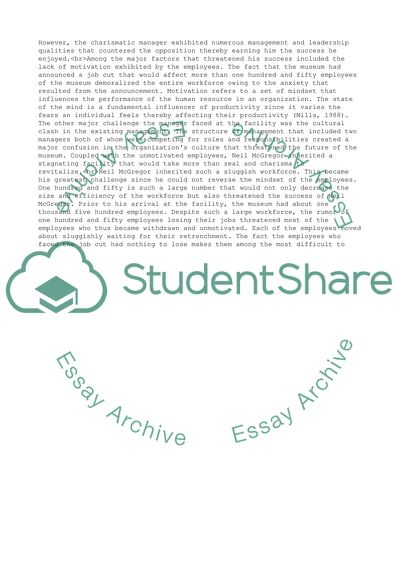Cite this document
(“Restoring the British Museum. Main change challenges faced by the Neil Essay”, n.d.)
Restoring the British Museum. Main change challenges faced by the Neil Essay. Retrieved from https://studentshare.org/business/1643644-restoring-the-british-museum-main-change-challenges-faced-by-the-neil-mcgregor-from-the-time-of-his-appointment-in-2002
Restoring the British Museum. Main change challenges faced by the Neil Essay. Retrieved from https://studentshare.org/business/1643644-restoring-the-british-museum-main-change-challenges-faced-by-the-neil-mcgregor-from-the-time-of-his-appointment-in-2002
(Restoring the British Museum. Main Change Challenges Faced by the Neil Essay)
Restoring the British Museum. Main Change Challenges Faced by the Neil Essay. https://studentshare.org/business/1643644-restoring-the-british-museum-main-change-challenges-faced-by-the-neil-mcgregor-from-the-time-of-his-appointment-in-2002.
Restoring the British Museum. Main Change Challenges Faced by the Neil Essay. https://studentshare.org/business/1643644-restoring-the-british-museum-main-change-challenges-faced-by-the-neil-mcgregor-from-the-time-of-his-appointment-in-2002.
“Restoring the British Museum. Main Change Challenges Faced by the Neil Essay”, n.d. https://studentshare.org/business/1643644-restoring-the-british-museum-main-change-challenges-faced-by-the-neil-mcgregor-from-the-time-of-his-appointment-in-2002.


